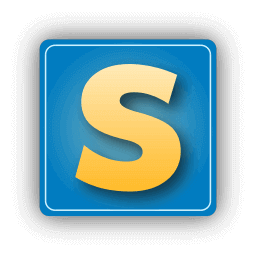
Fedora 41 is a fast, stable, and powerful Linux-based operating system for everyday use. It is completely free to use, study, and share. Built and maintained by a global community, it is part of the Fedora Project.
This OS provides software to suit many applications. Storage, memory, and processing requirements vary based on usage.
Hence, it is a collection of software that makes your computer run. Fedora uses the RPM package management system; the default desktop environment is GNOME, with GNOME Shell as the default interface. Other desktop environments, including KDE Plasma, Xfce, LXDE, MATE, and Cinnamon, are available for installation.
Software
This operating system includes many software options, such as LibreOffice and Firefox. Additional software is available from the software repositories, which you can install using the DNF package manager or GNOME Software.
Architectures
Fedora supports primary architectures, including Intel i686, AMD x86-64, and ARM-hfp. Pidora is a specialized distribution for the Raspberry Pi. It also supports secondary architectures such as ARM AArch64, IBM Power64, IBM Power64le, IBM Z, MIPS-64el, and MIPS-el.
Fedora is known for focusing on innovation by integrating new technologies early and collaborating closely with upstream Linux communities.
This operating system is sponsored by Red Hat, the world’s most trusted provider of open-source technology. As always, it continues to develop (Red Hat contributions) and integrate the latest free and open-source software.
Workstation Edition
A polished, easy-to-use operating system for laptop and desktop computers, with a complete set of tools and helpers for developers and makers of all kinds.
Server Edition
A powerful, flexible operating system that includes the best and latest data center technologies. It puts you in control of all your infrastructure and services.
Atomic Edition
Atomic Host provides the best platform for your Linux-Docker-Kubernetes (LDK) application stack. It is a lightweight, immutable platform designed specifically for running containerized applications. Atomic Host uses the same package repositories as the Server Edition and offers the latest versions of Atomic.
Live Image
Live images allow you to preview the OS before installing it. Instead of booting directly into the installer, a live image loads the same environment you will experience after installation. Workstations and Spins are examples of live images. Use a live image to install your preferred system, test on new hardware, troubleshoot, or share with friends.
DVD Image
DVD images boot directly into the installation environment and allow you to choose from various packages included. The DVD option is available only in the Server Edition. Use the Server DVD image when you want customized Fedora Server installations using an offline installation source.
netinstall Image
The netinstall image boots directly into the installation environment and uses online package repositories as the installation source. With a netinstall image, you can select various packages to create a customized installation. The Server netinstall image is universal and can be used to install any edition or your preferred set of packages.
ARM images
For many ARM systems, Fedora provides preconfigured filesystem images. Write the image on removable media and boot directly into a ready-to-use installation. ARM devices often require special setup procedures that are unavailable in this guide.
Cloud Images
Cloud images are preconfigured filesystem images with very few packages installed by default. They include special tools for interacting with cloud platforms and are not intended for use outside cloud environments. Fedora Cloud comes in several varieties. The Cloud Base image serves as a minimal base for cloud deployments, while the Cloud Atomic image is a Docker container host that uses Project Atomic technology for updates. A Docker base image is also available.
Boot Images
The tiny images at can be written on CDs, USB drives, or floppy disks. The BFO image loads installation media from Fedora’s servers and directly loads an installation environment, similar to the netinstall ISO. BFO images function like PXE deployments without having to set up a server.

